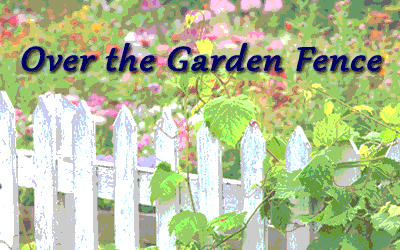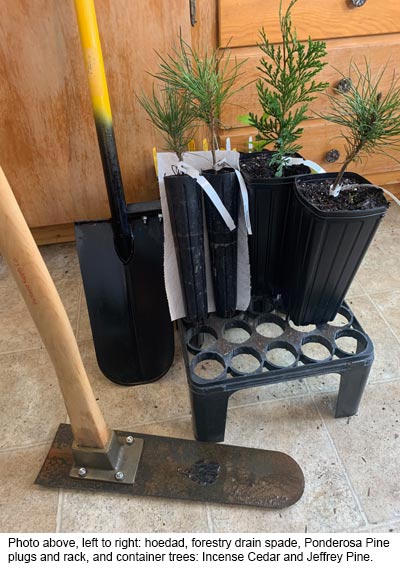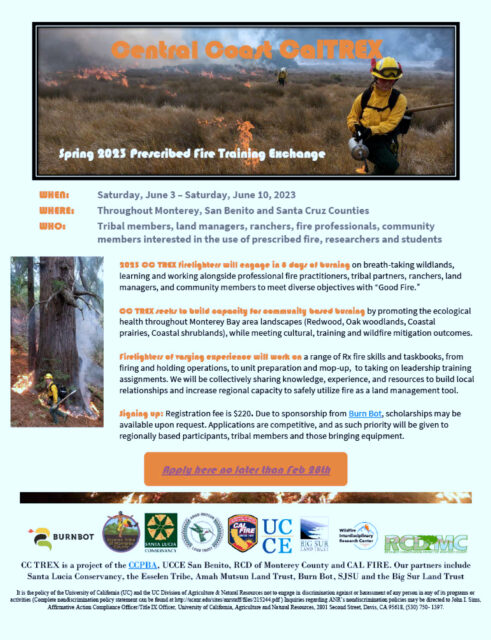|
|||||
|
Get FREE Help with HOME HARDENING
Over the Garden Fence – Planting Conifers for Post-Fire Forest Restoration
Planting Conifers for Post-Fire Forest Restoration
March 14, 2023 – Ron Allen, UC Master Gardener, Mariposa County – The Oak Fire (July 2022) devastated large parts of the ponderosa pine forest in the mountains east of Mariposa. Wooded  landscapes on private properties and substantial areas of the adjoining Sierra National Forest were affected. This article explains how to plant conifer seedlings for post-fire forest restoration.
landscapes on private properties and substantial areas of the adjoining Sierra National Forest were affected. This article explains how to plant conifer seedlings for post-fire forest restoration.
The conifer plant materials for reforestation are not large potted or crated trees, but rather seedlings in smaller tree pots or plugs. Potted seedlings—about one- to two-feet high—still come in standard, cylindrical one-gallon nursery containers, but are nowadays more commonly grown in tapered, ribbed plastic containers which are square in cross-section. These small trees are typically two to three years old. The plugs are smaller, cylindrical tubes, about two inches in diameter. Plug trees are cheaper, less hardy, and generally only a year old post-germination.
When purchasing pot or plug seedlings, it is tempting to select plants that are taller, anticipating that they will grow sooner to a desired height. But, instead, one should favor plants that are thicker at their base; they have a higher success rate for survival, owing to the likelihood of their having better root structures. Seedling survival is the key.
 Planting a potted seedling is straightforward. Clear the spot of any slash to expose the underlying soil. A site on the shady side of a stump or log is perfect. With a post-hole shovel (a drain spade), dig a hole about twice the volume of the tree pot and deep enough so that the pot soil matches the surrounding ground level. Tip the potted plant over, letting it slide out, and settle it into the hole. Refill the hole with native soil.
Planting a potted seedling is straightforward. Clear the spot of any slash to expose the underlying soil. A site on the shady side of a stump or log is perfect. With a post-hole shovel (a drain spade), dig a hole about twice the volume of the tree pot and deep enough so that the pot soil matches the surrounding ground level. Tip the potted plant over, letting it slide out, and settle it into the hole. Refill the hole with native soil.
In the case of a very hot local fire—indicated by the presence of white ash in the immediate area—add some mycorrhizal fungi soil amendments. Otherwise, native soil is best for refill. Level off the spot around the plant.
Planting a plug seedling is similar, but the hole is much smaller. It is important to ensure that the lower portion of the plug is firmly surrounded by soil when the hole is closed. Professional foresters—with many plugs to put down–use a special tool, called a hoedad, for this purpose. The hoedad is a short-handled hoe with an elongated blade. The planter strikes the blade into the ground and wiggles the handle to and fro so as to create a v-shaped indentation. The seedling plug is dropped into the depression. Then the hoedad is struck again into the ground adjacent to the plug and the handle pressed down, so that the deep blade closes the lower soil around the plug’s lower roots. With a stomp of the boot from above, the forester closes the planting hole. An accomplished forester does this in 30 seconds.
Pot or plug seedlings should be separated by ten to twelve feet for reforestation projects. If the target landscape is well-watered, the survival rate is approximately 75 percent. When the landscape water is less reliable, the survival rate falls to about 30 percent.
Appropriate conifers for reforestation after the Oak Fire are Ponderosa Pine, Sugar Pine, Knobcone Pine, Incense Cedar, and Douglas Fir. Future reforestation articles will cover broadleaf tree reforestation, post-fire planting of shrubs, and meadow restoration.
Related: Over the Garden Fence – The Partnership Between Humans and Nature During Fire Recovery: Part 5
Over the Garden Fence – The Partnership Between Humans and Nature During Fire Recovery: Part 4
Over the Garden Fence – The Partnership Between Humans and Nature During Fire Recovery: Part 3
Over the Garden Fence – The Partnership Between Humans and Nature During Fire Recovery: Part 2
Over the Garden Fence – The Partnership Between Humans and Nature During Fire Recovery
Mariposa County RCD Offers Free Help for Home Hardening
Funding, Training, and Home Hardening News – 13 February 2023
Dear Yosemite-Mariposa IRWM members and stakeholders,
1. The Bureau of Reclamation is making approximately $80 million from President Biden’s Bipartisan Infrastructure Law available for water conservation, water management, and restoration projects that will result in significant benefits to ecosystem or watershed health. The Bipartisan Infrastructure Law provided $8.3 billion for Reclamation water infrastructure projects over 5-years to advance drought resilience and expand access to clean water for families, farmers, and wildlife. The investment will repair aging water delivery systems, secure dams, complete rural water projects, and project aquatic ecosystems.
More information on this funding opportunity can be found by clicking here. Applications are due on March 28th at 3 pm. A recording was held to discuss eligible applicants and project types, program requirements, and the evaluation criteria. To view the recording, please click here. Please note that Microsoft Teams is required to view the recording, which is a little under 2-hours long.
2. The Mariposa County RCD is launching its Home Hardening program Countywide. We will be providing free site assessments, which will include a list of recommended hardening measures, and free installation of ember screens for attic and crawlspace vents, or vegetation clearance from 5 feet of building foundations. If you are interested in participating, or want to share with your networks, the enrollment process is to send an email titled Home Hardening with the applicant name, address, and phone number to MariposaCountyRCD@gmail.com. We will be in touch to schedule a site assessment.
3. Prescribed Fire training. Join CCTREX for the Central Coast Prescribed Fire Training Exchange (CalTREX)! The event will take place on June 3 – 10, 2023 througout the MontereyBay Region (San Benito, Monterey, Santa Cruz counties) and have a home base in Carmel Valley!
CCTREX firelighters will have 8 days of burning and training on diverse lands, learning and working alongside fire practicioners, tribal partners, ranchers, land managers, and community members to meet numerous objectives with “Good Fire”. The application deadline is February 28th, and the fee is $220. Apply now!
4. Two announcements from PG&E that may be of interest:
To help offset higher than normal natural gas and electricity bills, residential customers will automatically receive the California Climate Credit earlier than usual this year. The California Public Utilities Commission (CPUC) approved distributing the credit as soon as possible, instead of the annual April timeframe.
PG&E recently launched its Pre-Owned Electric Vehicle (EV) Rebate Program, providing qualified residential customers up to $4,000 when purchasing or leasing a pre-owned EV. The program aims to distribute more than $78 million to promote the adoption of EVs and make EV ownership more affordable for all customers. We also launched a pre-enrollment website for customers interested in joining the company’s three upcoming Vehicle-to-Everything (V2X) pilot programs, offering customers financial incentives to integrate new bidirectional EV charging technology, which allows a customer’s electric vehicle to become a mobile battery, capable of storing electricity that can be used to provide onsite power or send power back to the grid during periods of peak electricity demand.
Thank you for your participation in the Yosemite-Mariposa IRWM program.
Melinda Barrett
Mariposa County RCD
(559)580-0944



 What pyrodiversity looks like: a mosaic of burned, partially burned, and living trees after a wildfire in Montana.
What pyrodiversity looks like: a mosaic of burned, partially burned, and living trees after a wildfire in Montana.
